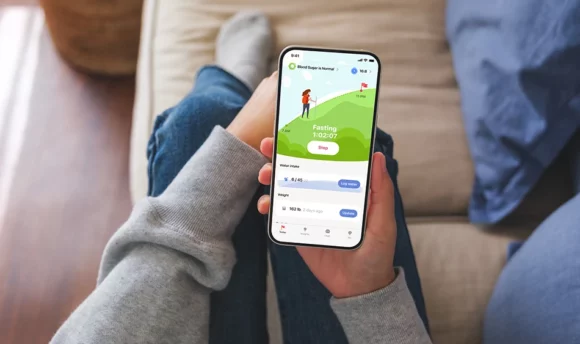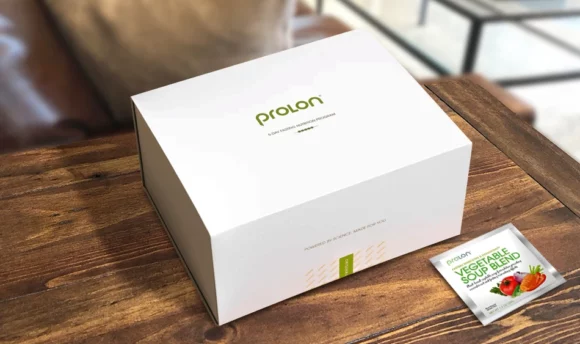How to Break a Fast: Diet Tips From an Expert
Fasting is a great way to cleanse the body, but it is important to know how to add foods back to your routine. Resuming eating can be challenging if you are new to intermittent fasting, but this article discusses the best ways to break a fast.

Fasting doesn’t last forever, and you will need to add some foods between your fasting periods to break your fast. If you’ve been experimenting with intermittent fasting, you have probably wondered what’s the best way to break a fast.
It is necessary to choose your foods wisely as some supplements, beverages, and foods can unintentionally break your fast.
If you are still new to fasting, this article will help you understand how to break a fast, the best foods to eat, and the best fasting practices.
Best Foods to Break a Fast
- Soup or chicken broth
- Green smoothie
- Vegetables
- Fermented foods
- Lean meat
- Apple cider vinegar
How to Properly Break a Fast?
Fasting means refraining from eating food for a given period. There are different fasting methods, but the principles of breaking a fast are generally the same. It is best to stick to whole foods to get a mix of macronutrients rather than carb-laden foods.
High-carb foods and sugary drinks will increase blood sugar levels, raising your insulin levels and making you feel hungrier. After going for a significant period without food, stomach acid changes your body. Knowing how many calories break a fast is best to plan your diet well.
It can also be tempting to break a fast with a heavy meal, but it will only leave you bloated and tired. Consuming heavy meals also halts or slows down your weight loss goals if you are using fasting to lose weight.
Consuming lots of sugar also increases the hunger hormone ghrelin, making fasting harder for the next day.
It is best to consider how long your fasting period will be and what kinds of foods you’ll eat during the fasting period. An intermittent fasting app helps you choose the best fasting approach, shows you nutritious meals to incorporate into your diet, and the best exercises to fit your routine.
DoFasting is a sophisticated iOS and Android app for intermittent fasting. It has personalized, unique fasting programs for each user and has a database with over 200 recipes to make meal prepping while fasting easier.
The app also educates and motivates you throughout your routine and offers fasting challenges to help stretch your willpower and encourage you to form healthier habits. Licensed professionals make all the diet plans, and the app is an accountability partner that guarantees your success.
6 Best Foods to Break a Fast
The best foods for breaking a fast are gentler foods to help you ease out of the fast efficiently. Introduce portions of easily digestible foods into your fast so as not to overwhelm your gut.
It is also best to avoid foods high in fats, sugars, or fiber, as they can lead to constipation, bowel discomfort, and bloating. Below are some of the best foods to break a fast.
#1 Soup
Soups are rich in proteins and easily digestible carbs to help you adjust easily during intermittent fasting. Avoid soups with heavy creams and high-fiber raw vegetables; instead, opt for soups with tofu, pasta, or lentils. A great option would be chicken broth.
You can also add bone broth, which is a rich protein source. Soups prepared with bone broth, non-starchy veggies, and healthy fat are a good way to reintroduce nutrients to your diet. Bone broth is also rich in magnesium, potassium, and calcium, which help replace the electrolytes lost during fasting.
#2 Green smoothies
When trying to ease into eating again, green smoothies are a better alternative than whole fruits and veggies as they contain less fiber and are more gentle to the digestive system.
Good low-glycemic green smoothies boost your energy levels and balance your energy and help you feel satiated without affecting your blood sugar levels. They are an effective way to reintroduce nutrients back to your body.
You can also incorporate veggies or freshly squeezed fruit juice into your first post-fast meal.
#3 Vegetables
Vegetables and leafy greens, such as spinach and kale contain many minerals such as iron, magnesium, copper, and manganese. Leafy vegetables also help improve digestion and minimize constipation.
Vegetables also help maintain blood sugar levels, which are affected when one is fasting. It is best to cook your vegetables to soften them and make them easier to digest. You can also add a tablespoon of extra virgin olive oil to your vegetables to increase the number of healthy fats in your foods.
#4 Fermented foods
Fermented foods such as kefir, kimchi, sauerkraut, and unsweetened yogurt help clean and nourish the gut with live cultures. They contain healthy bacteria and digestive juices that help improve the digestive process.
Yogurt also contains probiotics that make food easier to digest. These probiotics help increase immune support and address immune sensitivities.
#5 Lean meat
Lean meats are a low-calorie and high-protein food making them suitable for breaking a fast. They help increase satiety without shocking your digestive system. High-protein foods are also good for maintaining muscle mass during fasting.
Lean meat is rich in amino acids that are good for muscle growth and filling food that helps control appetite.
#6 Apple cider vinegar (ACV)
Another great alternative for breaking a fast is diluted apple cider vinegar, which helps stimulate the digestive system when mixed with water.
ACV is made from fermented apples, acts as a pH neutralizer, boosts metabolism, helps balance blood sugar, and detoxifies the body of wastes. Research suggests that taking ACV helps fight hunger pangs and cravings. It also shows an association between vinegar intake and improved insulin sensitivity and blood sugar levels.
What to Avoid While Breaking a Fast?
While breaking a fast, avoiding fried, sugary, and fast foods is advisable. Foods that are too high in fiber or complex carbs might be difficult to digest, leading to discomfort and bloating.
Some foods and drinks, such as soda, cake, and greasy cheeseburgers, can shock your system immediately after a fast.
It is also easy to overeat after breaking a fast. It is best to check your portion sizes to avoid undoing the health benefits otherwise gained.
Fasting emphasizes how much you eat rather than what you eat. This, however, should not be an excuse to eat junk food. Eating certain foods that are unhealthy or processed cancels out the health benefits of fasting.
How to Break a Prolonged Fast? 5 Best Options
Breaking a prolonged fast takes a lot of planning and care. Our bodies are constantly spending metabolic energy and producing digestive enzymes to break down the foods we eat. You should resume your diet by starting with a small meal. Eat slowly to promote better digestion.
After a prolonged fast, your digestive tract becomes sluggish, and it is best to avoid hard foods before your body starts ingesting calories again. To avoid gastrointestinal distress, you should make food selections that are helpful to your gut.
Below are the five best foods to help you break prolonged fasts.
#1 Eggs
Hard-boiled eggs are a great food rich in proteins, vitamins, and essential nutrients. They are low in calories and easily digested, and can make you feel full quickly.
Since they are a high-protein food, it boosts metabolism and helps them burn calories faster, which aids in weight loss. Consumption of eggs improves your insulin response, making them ideal for breaking a fast.
Studies show that breakfast eggs induce greater satiety and reduce short-term food intake.
#2 Olives
Olives are a low-carb food and rich in healthy fats. It also has potent anti-inflammatories that help minimize the risk of chronic diseases. Olives are also good for constipation relief and stimulating the growth of healthy gut microbiota.
#3 Cooked vegetables
Raw fruits and cooked vegetables such as broccoli and cauliflower are excellent options for breaking a fast as they are rich in vitamins, minerals, and essential minerals. Starchy vegetables such as potatoes can also make a good dietary choice. Cooking makes them easier to digest.
Raw cruciferous vegetables are also rich in fiber, which improves gut health and minimizes the chances of experiencing constipation.
#4 Half an avocado
Avocado is also suitable for breaking a long fast as it is low in calories and rich in antioxidants, minerals, fats, and vitamins. Avocados also produce lipoates that help in fat burning.
Their high unsaturated fat content ensures you stay satiated for extended periods. A 2013 study showed that adding half an avocado to your food keeps you fuller for longer than a diet without avocado.
#5 Coconut oil
Coconut oil is rich in MCT oils and contains about 72% of saturated fats. It also boosts your energy levels and supplies the body with essential fatty acids. It also serves as a cleansing agent if properly consumed.
Adding coconut oil to your food also helps in weight management.
Potential Side Effects of Breaking a Prolonged Fast
Though prolonged fasting is generally safe, it might have side effects such as dehydration, electrolyte imbalance, and fatigue. You can also experience headaches and light-headedness, especially in the first few days of fasting.
Some people may also experience reduced energy levels leading to fatigue. One way to counter reduced energy levels is by taking part in light exercises and avoiding overeating.
Prolonged fasting may also lead to hunger and dizziness among some people. It is best to start with short fasts before working on longer ones. Other people may also experience digestive issues such as nausea, diarrhea, and bloating.
People with type 2 diabetes or high blood pressure, underweight, pregnant, and breastfeeding women should refrain from prolonged fasting to avoid health complications.
A Word From a Nutritionist
Fasting can help one lose weight, improve risk factors such as heart disease, and promote cell autophagy – self-cleaning and recycling of cells. It also helps reduce the likelihood of diabetes, cancer, and fatty liver disease.
Though fasting is an efficient way to lose weight, it is best to avoid going into starvation mode as it might affect biological responses such as breathing and digestion.
Healthy fasting should accommodate a reasonable eating window. It is also advisable to avoid problematic foods for the best results after fasting.
People with health conditions such as nutrient deficiencies, type 2 diabetes, or high blood pressure should minimize fasting to avoid dangerous health complications.
Before making any dietary changes, it is best to consult your nutritionist for the best results from fasting.
Conclusion
Fasting is good for weight loss, cancer prevention, and diabetes management. When fasting, knowing the foods that help you easily break a fast is best.
You can use fasting apps such as DoFasting to help with meal prepping and dietary routines that help you resume eating seamlessly. Using meal prepping helps reduce the temptation to eat unhealthy foods.
Avoid foods high in fats, refined carbohydrates, and sugars, as they might be difficult to digest and make it hard to revert to a normal eating pattern.

















































 Select your language:
Select your language: 








